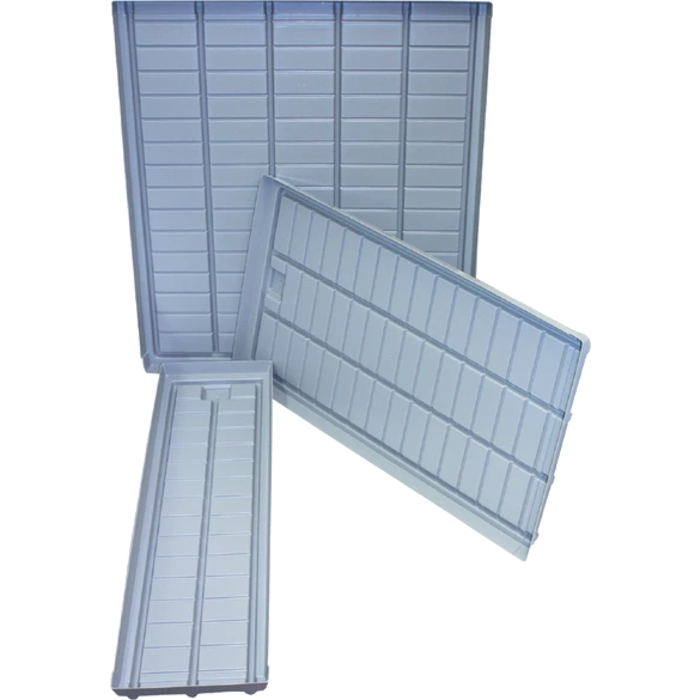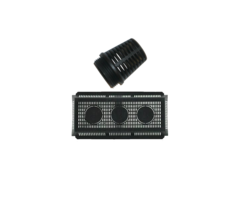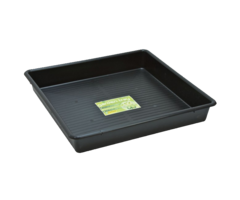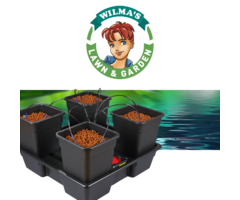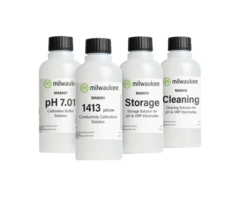Danish growing tray - Ebb & Flood
Ebb & flow soil for your hobby culture
Danish soil is an innovative solution in the agriculture and horticulture sector that is distinguished by its material and production process. This soil is made of polystyrene, a type of plastic, and is about 3 centimeters thick. What is unique about the Danish soil is that it is made by vacuum forming, a technique that allows the material to be molded into complex shapes.
How Does an Ebb & Flow System Work?
In an ebb & flow system, a nutrient solution is pumped from a reservoir into the planters or beds. This occurs at regular intervals, giving the plants a chance to absorb the water and nutrients. After a certain period of time, the remaining solution is drained back to the reservoir, where it is remixed and prepared for the next irrigation cycle.
Benefits of Ebb & Flow irrigation
- Water savings: Because the nutrient solution is reused, there is significant water savings.
- Efficiency: By setting the ebb and flood times, one can perfectly match the watering to the needs of the plants.
- Uniform water distribution: The system ensures uniform distribution of water and nutrients.
- Reduced diseases: Because the system helps prevent stagnant water, it reduces the risk of root rot and other water-related diseases.
Important Considerations
- Pump quality: A high-quality pump is essential for reliable operation.
- System monitoring: Regular monitoring of water and nutrient levels in the reservoir is important.
- Compatibility with substrates: Not all plant substrates are suitable for ebb & flow systems. It is advisable to check in advance.
Polystyrene as a material has several advantages. It is lightweight, which makes it convenient for transport and movement within a nursery or farm. In addition, it is resistant to various weather conditions and chemicals, making it durable and versatile. Because polystyrene has a smooth surface, algae and fungi have a harder time adhering, contributing to a hygienic growing environment.
Vacuum forming: The production process behind the Danish soil
The vacuum forming process also contributes to the efficiency and functionality of Danish soil. This technique allows specific features such as drainage channels or attachment points to be integrated directly into the soil. This can help improve water management and simplify the installation of additional systems such as irrigation.

Modular design: Scalability and adaptability of the Danish soil
Another aspect that makes Danish soil favorable is the possibility for modular arrangement. Many systems are designed to work together as a cohesive unit. This makes it easy to scale up or adapt operations to specific growing needs. Modularity also makes it easier to clean and maintain the soil, saving time and effort.
The combination of high-quality polystyrene and vacuum forming technology makes it an effective alternative to more traditional growing substrates. It is an excellent example of how innovation in materials and production techniques can lead to better and more efficient solutions in the agriculture and horticulture sector.
An overview of the main points:
- Material - Polystyrene: The bottom is made of approximately 3 cm thick polystyrene, a durable and lightweight plastic.
- Production process - Vacuum forming: Danish bottom is produced by vacuum forming, a technique that allows the creation of complex shapes and structures.
- Weather and chemical resistant: Polystyrene is resistant to various weather conditions and chemicals, making it a durable choice.
- Hygienic: The smooth surface of polystyrene makes it difficult for algae and mold to adhere, providing a more hygienic growing environment.
- Integrated features: The vacuum forming process allows specific features such as drainage channels and attachment points to be integrated directly into the soil.
- Modular design: Danish soil is often designed to be modular, making it easy to scale and adapt to different growing needs.
- Low maintenance: The material and design make cleaning and maintaining the soil relatively easy, saving time and effort.
- Versatility: The combination of material, design and production method makes Danish soil suitable for a wide range of cultivation applications.

